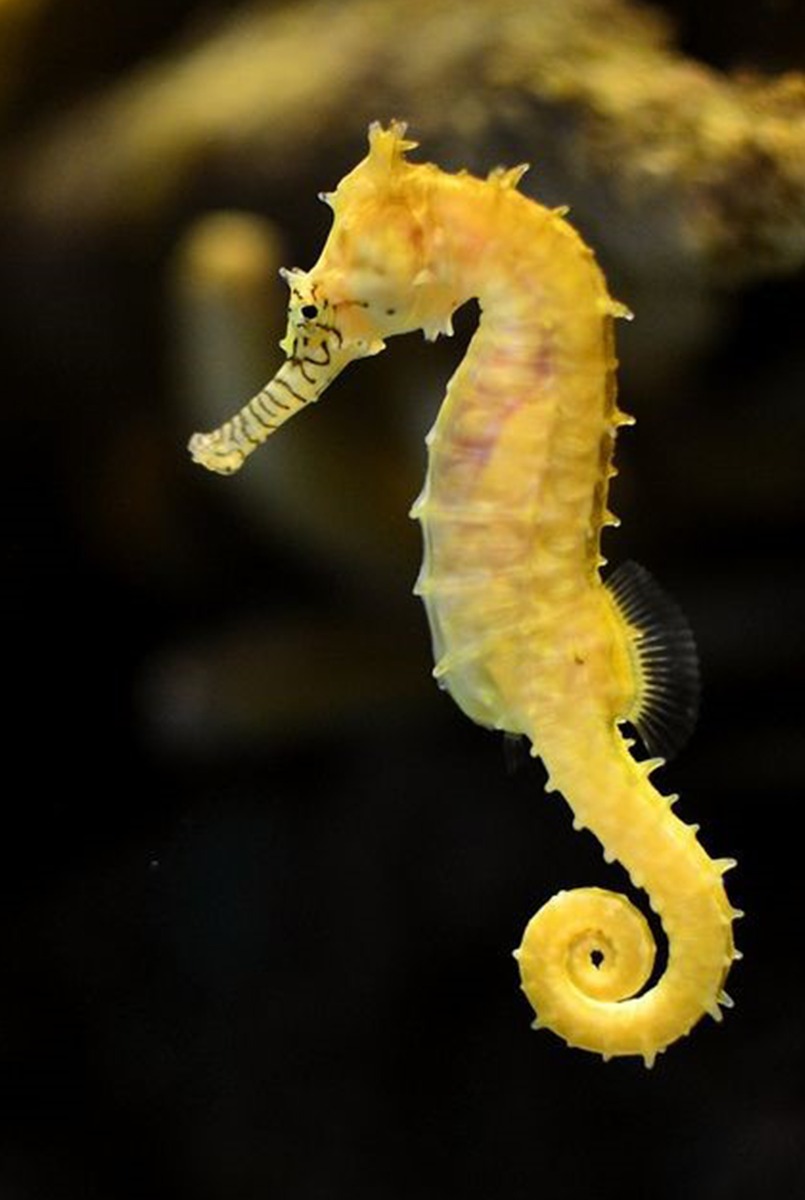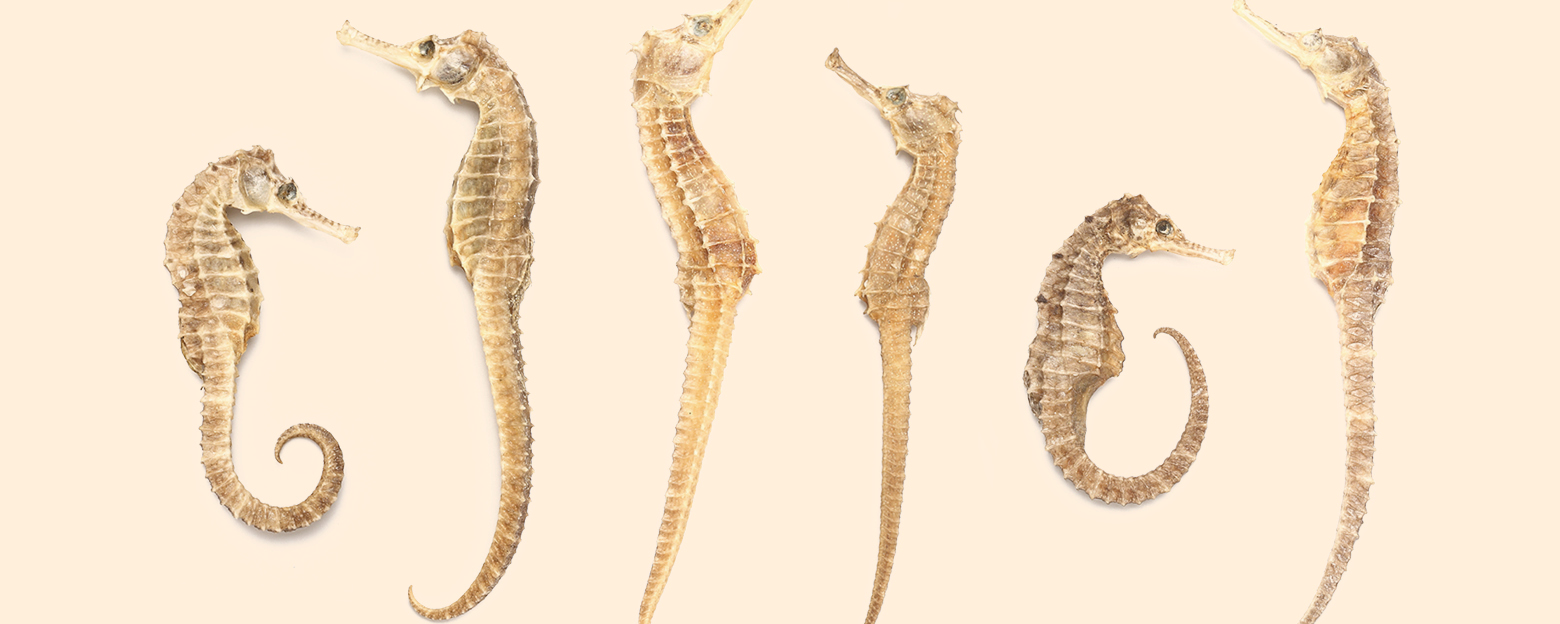There are approximately 32 species of seahorses, found in shallow coastal waters of tropical and subtropical regions between approximately 30 degrees north and south latitude. They primarily inhabit the western Atlantic Ocean and the western Pacific region. One of the most fascinating aspects of seahorses is their unique reproductive method. Female seahorses deposit eggs into the male seahorse's brood pouch (also known as a brood pouch), and after a gestation period of 2 to 3 weeks, the male seahorse gives birth to the baby seahorses.

The use of seahorses in traditional Chinese medicine can be traced back to the Tang Dynasty. Historical records state that Emperor Tang Minghuang, in his later years, indulged in pleasure and would often stay up late into the night, neglecting his morning court duties. It is said that Emperor Tang Xuanzong consumed seahorse wine daily to maintain his youthful vitality in his later years. There is a saying, "In the north, there is ginseng; in the south, there are seahorses," which highlights the medicinal value of seahorses, comparable to that of ginseng. According to the "Compendium of Materia Medica" (Bencao Gangmu), seahorses are believed to warm the five internal organs, strengthen the yang energy, and have therapeutic effects on ulcers, swelling, and toxicity.

Warm

Liver

Kidney

Sweet

Salty
Enhance yang energy, tonify kidney, delay aging.
| . | Enhance yang energy and nourish kidney Seahorses have a fatty composition that includes approximately 14.1% DHA (docosahexaenoic acid) and EPA (eicosapentaenoic acid). These elements are considered the primary energy sources for prostate and sperm cells, leading to the belief that seahorses have the effect of nourishing the kidneys and enhancing yang energy.
|
| . | Regulate blood pressure Seahorses have a relatively high content of potassium, which can regulate intracellular osmotic pressure and the balance of body fluid acidity and alkalinity. It is involved in the metabolism of cellular sugars and proteins. Potassium contributes to maintaining neurological health, regular heartbeats, and can help prevent strokes. Potassium can also counterbalance sodium ions in the body, reducing the risk of hypertension caused by excessive sodium intake.
|
| . | Delay Aging Studies have shown that seahorse extracts contain active substances that can increase the body's oxidative resistance, reduce the activity of monoamine oxidase, and lower the levels of lipid peroxidation in the human body. This can help slow down the rate of cellular membrane deterioration and contribute to anti-aging effects.
|

Seahorses are primarily found in shallow coastal waters of tropical and subtropical regions between approximately 30 degrees north and south latitude. They inhabit areas such as seagrass beds, coral reefs, and other coastal habitats. Some seahorse species can also be found in mangrove forests near river estuaries.
Seahorses typically prefer to live in the gentle currents of coral reefs. They are not strong swimmers, so they often use their prehensile tails to tightly grasp onto the branches of corals or the leaves of seaweed. By anchoring themselves, they can avoid being swept away by strong currents.
Water Temperature:
The suitable temperature range of the seahorse is generally between 12-32°C, and the optimal temperature is about 28°C.
Salinity:
Seahorses are euryhaline fish, meaning they can live within a wide range of salinity levels, from 10 to 3 parts per thousand (ppt). However, newborn seahorses have a lower ability to adapt to salinity, and it is generally recommended to maintain salinity levels above 15 ppt for them. In prolonged periods of low-salinity environments, adult seahorses may have difficulties reproducing unless the salinity is maintained at or above 10 ppt.
Dissolved Oxygen:
Although the seahorses are less active, it has a large demand for oxygen in the water, generally requiring dissolved oxygen above 3ml/L, and if it is less than 2.5ml/L, the seahorses will be in a state of hypoxia.
Lighting:
Seahorses have specific requirements for light intensity. If the light intensity is too low, it can hinder their activity and feeding. Prolonged exposure to low light levels can lead to decreased vision or even blindness in seahorses. On the other hand, if the light intensity is too high, it can lead to excessive algal growth, which can result in various diseases and issues within the seahorse habitat.
Seahorses are available throughout the year, with the highest production typically occurring in August and September. When fishermen catch seahorses, they are usually caught along with other fish. The seahorses are then processed by removing their internal organs and drying them. Some methods involve removing the external black or grayish membrane, coiling the tails, and drying them. Additionally, seahorses of similar sizes may be paired and tied together with red thread.















